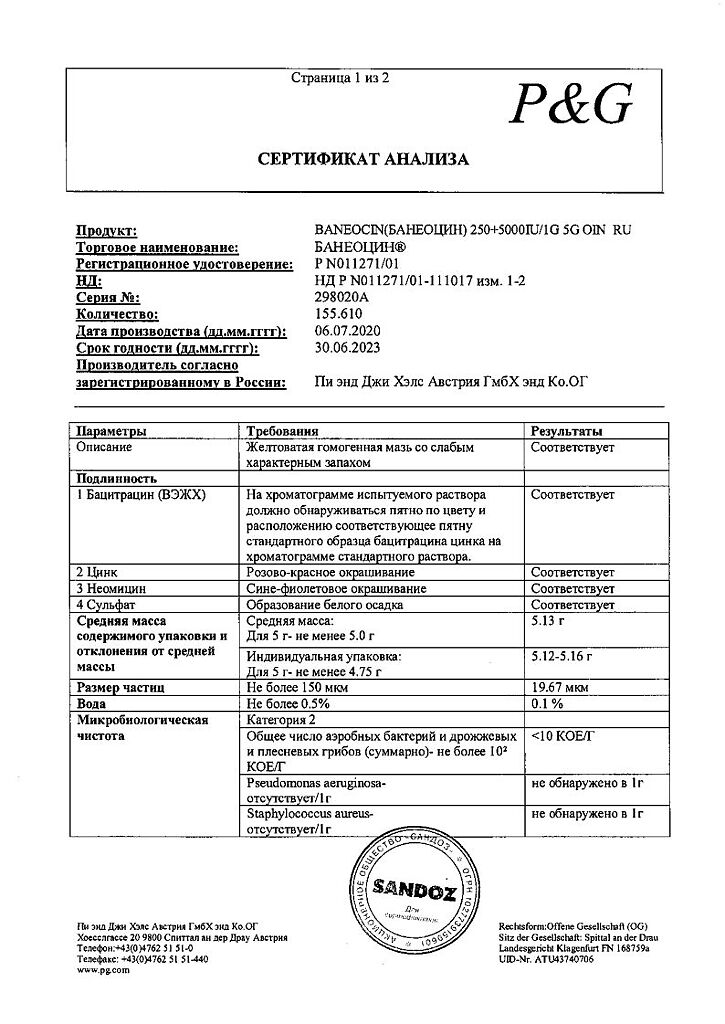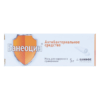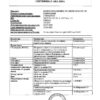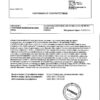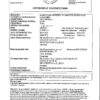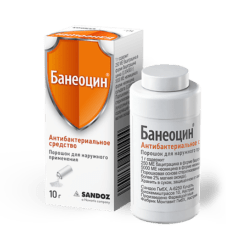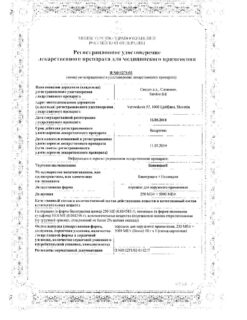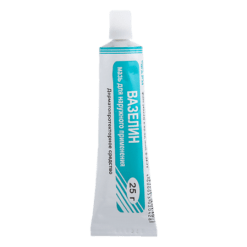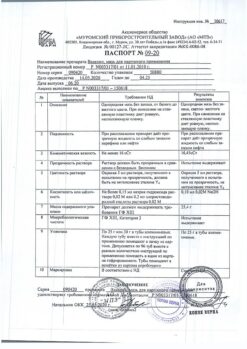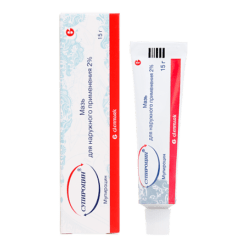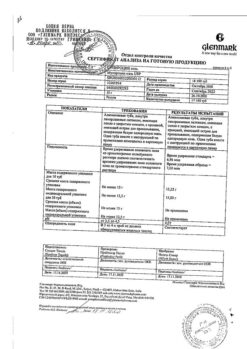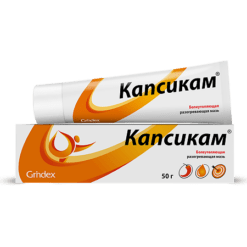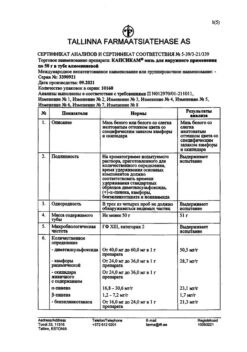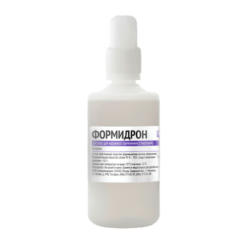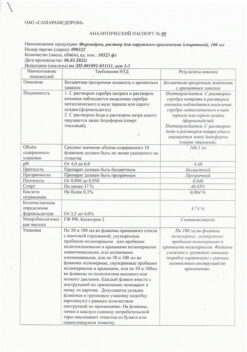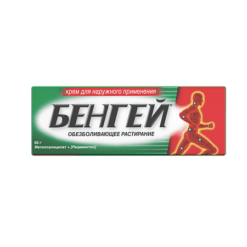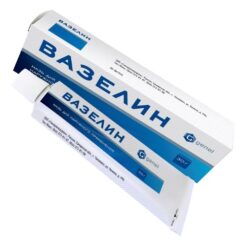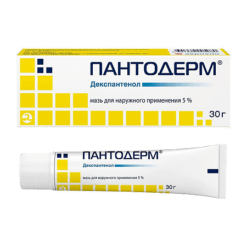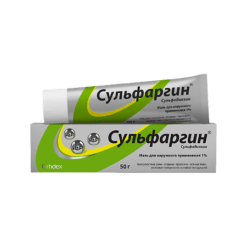No products in the cart.
Baneocin, ointment 250 me/g+5000 me/g 5 g
€11.67 €10.21
Out of stock
(E-mail when Stock is available)
Description
A combined antibacterial drug for external use. It contains two antibiotics with bactericidal action, neomycin and bacitracin.
Bacitracin is a polypeptide antibiotic that inhibits the synthesis of the bacterial cell membrane.
It is active against Gram-positive (Streptococcus spp. /including β-hemolytic streptococcus/, Staphylococcus spp.) and some gram-negative microorganisms. Resistance to bacitracin develops rarely.
Neomycin is an aminoglycoside antibiotic that inhibits bacterial protein synthesis. It is active against Gram-positive and Gram-negative bacteria.
The use of the combination of these two antibiotics has achieved a broad spectrum of the drug and synergistic action against a number of microorganisms, such as staphylococci.
Indications
Indications
Treatment of infectious and inflammatory skin diseases caused by microorganisms sensitive to the drug:
– focal skin infections, incl. boils, carbuncles (after surgical treatment), staphylococcal sycosis, periporitis, deep folliculitis, hidradenitis suppurativa, paronychia;
– bacterial skin infections of limited prevalence, incl. contagious impetigo, infected ulcers of the lower extremities, secondary infected eczema, secondary infection in dermatoses, cuts, abrasions, burns, in cosmetic surgery and skin transplantation (also for prophylactic purposes and for impregnation of dressings).
Prevention and treatment of infection after surgery (as part of combination therapy in the postoperative period).
Pharmacological effect
Pharmacological effect
Combined antibacterial drug for external use. Contains two antibiotics that have a bactericidal effect, neomycin and bacitracin.
Bacitracin is a polypeptide antibiotic that inhibits the synthesis of bacterial cell walls.
Active against gram-positive (Streptococcus spp. /including β-hemolytic streptococcus/, Staphylococcus spp.) and some gram-negative microorganisms. Resistance to bacitracin rarely develops.
Neomycin is an aminoglycoside antibiotic that inhibits bacterial protein synthesis. Active against gram-positive and gram-negative bacteria.
Thanks to the use of a combination of these two antibiotics, a wide spectrum of action of the drug and synergistic action against a number of microorganisms, for example, staphylococci, are achieved.
Special instructions
Special instructions
Since the risk of toxic effects increases with decreased liver and/or kidney function, blood and urine tests together with audiometric testing should be performed in patients with liver and/or kidney failure before and during therapy with Baneocin®.
If absorption of the active components of Baneocin® is possible, it is necessary to monitor the possible appearance of signs of neuromuscular blockade, especially in patients with acidosis, myasthenia gravis or other neuromuscular diseases. If neuromuscular blockade develops, calcium supplements or neostigmine are indicated.
With long-term use of the drug, it is necessary to monitor the possible excessive growth of resistant microorganisms. If necessary, appropriate treatment should be prescribed.
If the drug is used in children, patients with impaired liver and kidney function, as well as with a large surface area to be treated, long-term use and deep skin lesions, you should first consult a doctor.
If allergic reactions and superinfection develop, the drug should be discontinued.
It is possible that photosensitivity or phototoxic reactions may develop in patients using Baneocin® ointment when exposed to the sun or exposure to UV radiation.
Impact on the ability to drive vehicles and operate machinery
No special precautions required.
Active ingredient
Active ingredient
Bacitracin, Neomycin
Composition
Composition
1 g ointment contains:
Active substances:
bacitracin (as bacitracin zinc) 250 IU;
neomycin (in the form of neomycin sulfate) 5000 IU.
Excipients:
lanolin,
white soft paraffin.
Contraindications
Contraindications
– extensive skin lesions (risk of developing an ototoxic effect accompanied by hearing loss);
– severe impairment of renal excretory function (due to cardiac or renal failure) in patients with existing diseases of the cochleovestibular apparatus (if systemic absorption of the drug is possible);
– infections of the external auditory canal with perforation of the eardrum;
– simultaneous use with systemic aminoglycoside antibiotics (risk of cumulative toxicity);
– hypersensitivity to bacitracin, neomycin or other aminoglycosides, auxiliary components of the drug.
Do not use the drug to treat eye infections.
The drug should be prescribed with caution to patients with impaired liver and/or renal function, acidosis, myasthenia gravis or other neuromuscular diseases.
Side Effects
Side Effects
According to WHO, adverse effects are classified according to frequency as follows: very common (≥1/10), common (≥1/100 to <1/10), uncommon (≥1/1000 to <1/100), rare (≥10,000 to <1/1000), very rare (<1/10,000), frequency unknown (according to It was not possible to determine the frequency of occurrence based on the available data).
Baneocin® is usually well tolerated when used externally.
From the immune system: rarely – allergic reactions (if there is a history of allergic reactions to neomycin, in 50% of cases the development of cross-allergy to other aminoglycosides is possible); frequency unknown – increased sensitivity to various substances, including neomycin (usually observed when used in the treatment of chronic dermatoses); in some cases, allergic reactions may appear as a lack of effect from the therapy.
From the nervous system: frequency unknown – damage to the vestibular nerve, impaired neuromuscular conduction.
On the part of the hearing organ: frequency unknown – ototoxicity.
From the skin and subcutaneous tissues: rarely – allergic reactions manifesting as contact dermatitis, an allergic reaction to neomycin; frequency unknown – allergic reactions in the form of redness and dryness of the skin, rash, itching (with long-term use) may also be similar to the spread of primary lesions or lack of healing. The development of photosensitivity and phototoxic reactions is possible (when exposed to the sun or exposure to UV radiation).
From the urinary system: frequency unknown – nephrotoxicity.
If these side effects occur or if any other side effects not listed in the instructions develop, the patient should immediately inform the doctor.
Interaction
Interaction
With systemic absorption of the active components of the drug, simultaneous use of cephalosporins or aminoglycoside antibiotics may increase the likelihood of developing nephrotoxic reactions.
When using the drug Baneocin® simultaneously with ethacrynic acid or furosemide, the risk of developing oto- and nephrotoxic reactions increases.
Absorption of the active components of the drug Baneocin® when used simultaneously with opioid analgesics, anesthetics and muscle relaxants may increase the risk of developing neuromuscular conduction disorders.
Overdose
Overdose
When used in doses significantly higher than recommended, especially in the treatment of (neuro)trophic ulcers, nephro- and ototoxic reactions may occur due to possible absorption of the active components of the drug Baneocin®.
Recommendations for use
Recommendations for use
The use of Baneocin® during pregnancy and lactation is possible after consultation with a doctor and only if the expected benefit to the mother outweighs the potential risk to the fetus or infant.
It should be remembered that neomycin, like all aminoglycoside antibiotics, can penetrate the placental barrier. Intrauterine hearing loss in the fetus has been described with systemic use of aminoglycoside antibiotics in high doses.
Storage conditions
Storage conditions
The drug should be stored out of the reach of children at a temperature not exceeding 25°C.
Shelf life
Shelf life
3 years.
Manufacturer
Manufacturer
Salutas Pharma GmbH, Germany
Additional information
| Shelf life | 3 years. |
|---|---|
| Conditions of storage | The drug should be kept out of reach of children at a temperature not exceeding 25 ° C. |
| Manufacturer | Merck KGaA & Co, Austria |
| Medication form | topical ointment |
| Brand | Merck KGaA & Co |
Other forms…
Related products
Buy Baneocin, ointment 250 me/g+5000 me/g 5 g with delivery to USA, UK, Europe and over 120 other countries.


